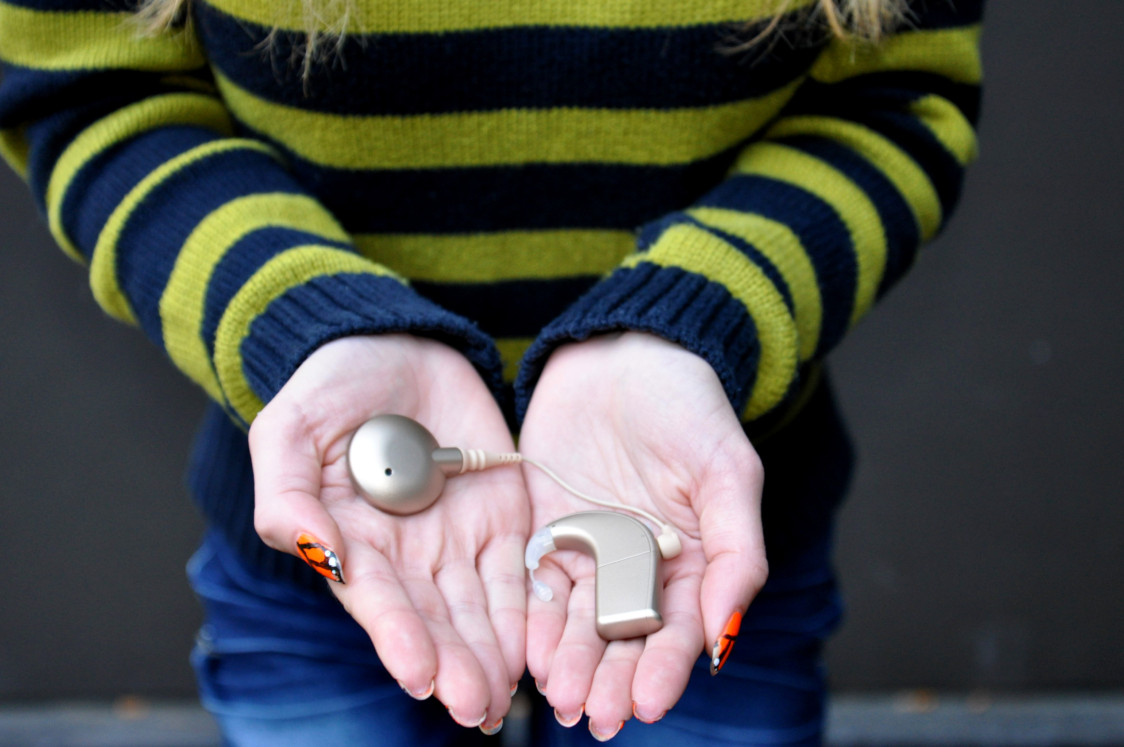
Photo by Emily VanSchmus
One writer struggles with her identity after health insurance leaves her in limbo
Words by Sydney Price
My heart raced—a frenzied staccato of panic. I was over 4,500 miles from home, studying abroad in Florence, Italy, and I couldn’t hear a thing.
I woke up, got out of bed, wandered to the dresser and put on my cochlear implant—like I’d done every morning for the last 16 years. This time, though, the small device I relied on to hear the birds chirping each brisk Italian morning wasn’t working. No sound. Adrenaline pulsed through my body. I was suddenly wide awake. I tried again, just to be sure. Nothing.
It was the tail end of April. I had two weeks and five finals to go, but everything around me was silent.
The Bionic Ear(s)
A cochlear implant isn’t a hearing aid. It doesn’t amplify sound. It converts it, morphs it into electrical impulses that stimulate the auditory (cochlear) nerve in a way that can be understood and interpreted by the brain. It does this using two parts: there are the external microphone and speech processor, which do exactly what you’d think they do. Then there are the internal transmitter and receiver, which converts the sound to electric pulses and sends it to electrodes in the cochlea, that spiral part of the inner ear that processes sound.
These implants are relatively new technology—and they’re fairly rare. In the United States, CIs were first FDA-approved for adults in the mid-1980s. Since then, roughly 58,000 devices have been implanted in those over 18 in the U.S. Implants were approved for children in 1990. I’m one of the approximately 38,000 American kids who have received them. I got mine in 1999 at age five. Today, bilateral implantation (both ears) is a common practice, but I only received one implant. So when it didn’t work, I couldn’t hear.
Luckily, the company that manufactured my implant has an international office in Milan, so one last-minute emergency train ticket later, I was on my way. Two technicians greeted me and ran a series of tests on both the external and internal portions of my implant to figure out what was wrong. I tried to convince myself it was nothing. A cord malfunction maybe—just a part replacement. As they worked, my implant taunted me, sputtering on for a second only to cut out again, like when you’re in a bad cell service area and parts of a phone conversation cut out. This happened over and over. The women I was working with had to alternate between speaking to me and scribbling things down on a piece of paper. It wouldn’t work long enough for the whole message to get through.
A long, hopeful moment went by without a hiccup. We thought we’d solved it. Then it flickered off again.
They knew it before I did.
They glanced at each other, eyes downcast. One shook her head gently. The other wrote the word down and passed the paper across the table. It is intermittent.
The world was silent. I was deaf.”
-Sydney Price
I processed this for several moments. The device I’d faithfully relied on for 16 years needed to be replaced. Surgically replaced. I ran out of the building in tears. The technicians came out to see me. They murmured comforting (I assumed) words in Italian and sympathetically rubbed my shoulders. The world was silent. I was deaf.
Missing Out
While still abroad, I learned how to say, “I’m deaf” in Italian (Sono sordo). It wasn’t nearly as difficult as I’d imagined being deaf in a different country might be. But when you deal with people who don’t speak your language every day, you learn to improvise.
It was different when I returned to the States. Once the relief of seeing familiar faces wore off, I was forced to confront my identity—or lack thereof—as a deaf person.
I’d been able to hear for as long as I could remember. I don’t know sign language. I never considered myself a part of Deaf culture.
As such, I’m a member of the hidden deaf. At a glance, you wouldn’t know that I struggle to hear every day. My life isn’t particularly remarkable. I’m a college student with an internship. I go out on weekends. I stay up too late in the library, and I scramble to finish projects—just like everyone else.
Back in Italy, “sordo” lacked the connotation that the word “deaf” carries for me in English. Saying “deaf” out loud felt like a dirty word. And publicly admitting my disability felt like admitting weakness. I never considered myself disabled—I could hear with my implant, after all.
And I tried to continue to live my life that way. Even without a functioning implant, I spoke normally and attempted to lip-read the best that I could. This didn’t work well. Puzzled stares followed me to Target, at lunch with my brother and even while getting coffee. I left many stores with burning cheeks. Suddenly, I no longer blended in. My deafness felt like a flashing neon sign above my head. I wanted to scream, “There’s nothing wrong with me!”
In May, after I was back in my native Illinois and had filed all the necessary paperwork to replace my implant, my hearing was deemed lower priority by my insurance company because it wasn’t a life-threatening emergency.
But it threatened the quality of my life. I missed important moments: my uncle’s wedding, my little cousin’s dance recital and group dinners with friends. I was there, but I floated on the periphery. It was like watching a silent movie—but it’s not enjoyable to be an audience to your own life. I felt left out and lonely, even among friends. Sure, I could text and chat online. My family wrote messages for me on a small whiteboard. But it wasn’t enough. I was used to rich communication—tone of voice, laughter, expressions that go with words. Text on a screen can’t imitate that. Nothing but actual sound can.
Access to CIs
It costs $120,000 for me to hear—and that’s on the lower end. The implant alone costs $83,000 (over half the cost of my college tuition). The rest covers the surgery, but it doesn’t include the anesthesiologist, numerous follow-up audiologist visits and the post-surgery auditory therapy.
Unsurprisingly, when insurance approval finally came through in June, it was for replacement of the failed implant. A request for a second implant was deemed “medically unnecessary.” An appeal to reopen the case for an additional implant could potentially take even more weeks of red tape. Alternatively, my own employer’s insurance might cover another implant in the future.
But at that point, I was too tired to argue.
Organizations like the American Cochlear Implant Alliance are working to improve access to CIs at the national level. Under the Affordable Care Act, many plans cover cochlear implants. However, different interpretations of the law (which varies from state to state) can lead to coverage denials ranging from refusing to cover the surgery altogether; not covering replacement parts such as external cables, batteries and processor microphones; or not allowing enough postoperative therapy sessions.
And those therapy sessions matter. All that hardware doesn’t mean you can suddenly go from silence to surround sound. Without all the training to make it work, a cochlear implant is nothing more than a really expensive hunk of wires.
Hearing Again—-Eventually
The surgical incision needs to heal, so an implant can’t be turned on right away. Typically, you have to wait two to three weeks after surgery to activate it. And the implant must be turned up gradually to prevent overwhelming the patient.
On July 26, I was in another doctor’s office, fidgeting and nervous. I didn’t want to get my hopes up.
“Are you ready?” my audiologist mouthed. No. Yes. I don’t know.
She turned it on. I blinked cautiously. Beep beep beep beep. It was garbled and robotic – but it was sound. It took me a moment to realize that the timing of the beeps matched up with the movement of her lips. Oh. Right. She was talking. It was like hearing underwater or trying to decipher a static-swamped phone call from the other side of the room.
It was just the beginning, but I was relieved. Turning on an implant isn’t a magic switch. My brain needed time to understand auditory information again. During the three months I couldn’t hear, my brain lost some of its ability to understand sound. Music: gone. Speech: gone. Wind in the leaves: gone.
The neural pathways that helped me process all those electric pulses disappeared because of inactivity, reassigned to other functions. So I had to rebuild neural connections—and that’s not easy. I didn’t just need a slew of audiologist appointments to test if I could hear. I also needed auditory rehabilitation to help retrain my brain so I could understand what I was hearing. And I couldn’t do this without Lynn Wood, an auditory verbal therapist who worked with me after my surgery.
“We can describe [it] as guidance in finding meaningful footholds in the presence of an abundance of auditory data,” Wood said. “It is well accepted that people can improve their physical fitness with the help of an expert. Similarly, an auditory therapist can suggest training activities appropriate for the individual’s hearing history, communication skills and lifestyle.”
Some of these activities included listening games with willing friends and family and iPad apps that played common words over and over until I could identify them correctly. (Want to test your hearing? Try it out here.) Trying to compete against my own brain meant that more often than not, I wanted to hurl the iPad across the room. And it didn’t help that I couldn’t wear the implant all day because the overstimulation gave me headaches. But as the weeks went by, my hearing slowly improved.
“Adaptation to a cochlear implant is a dynamic process,” Wood said. “While adapting to new hearing aids can take a few weeks or even months, hearing access after cochlear implantation changes dramatically immediately and during the first few months. It continues to improve during the first few years after cochlear implantation.”
Adaptation to a cochlear implant is a dynamic process.”
-Lynn Wood
It’s now been over three months since my new implant was turned on—and almost six months since my old one went dead. Not every deaf person gets to say she took her hearing for granted. I did.
I never expected to experience silence for so long, but those three months made me appreciate even the smallest of sounds. They reminded me that I’m lucky and present in the world.
Maybe it’s time to think about that second implant.

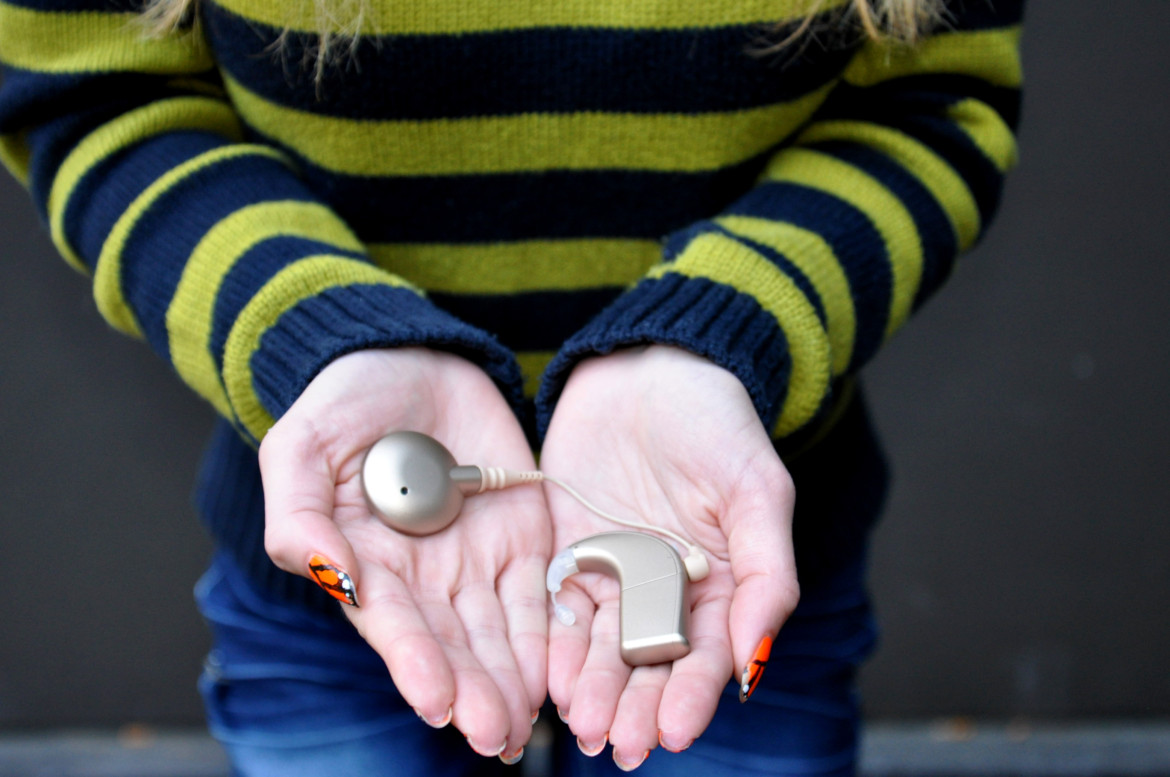



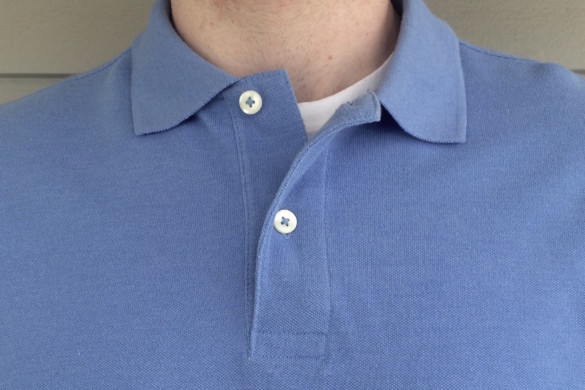
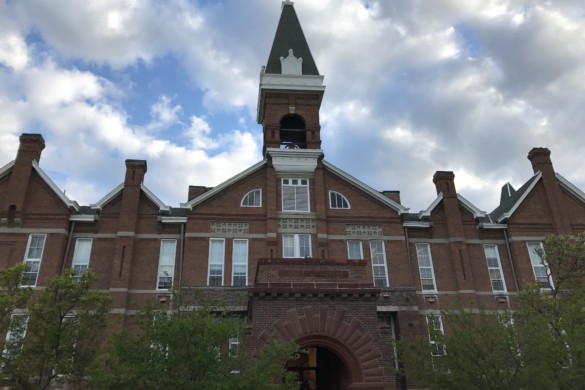

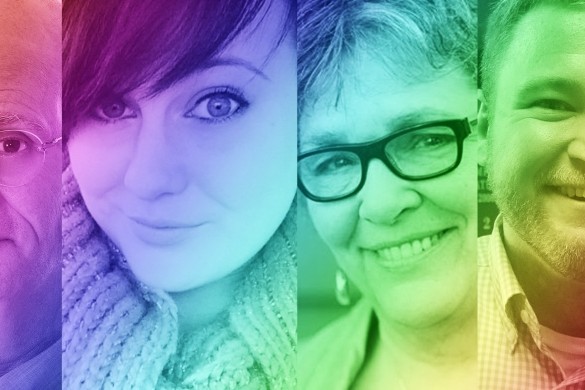
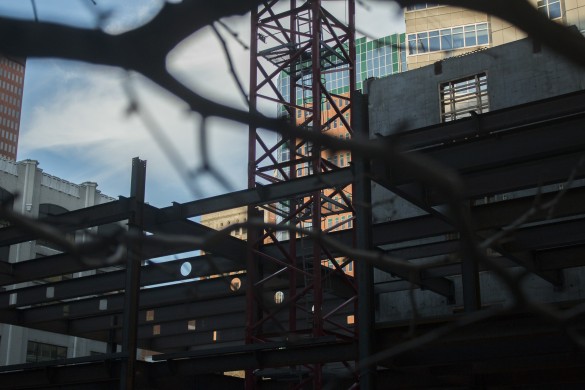

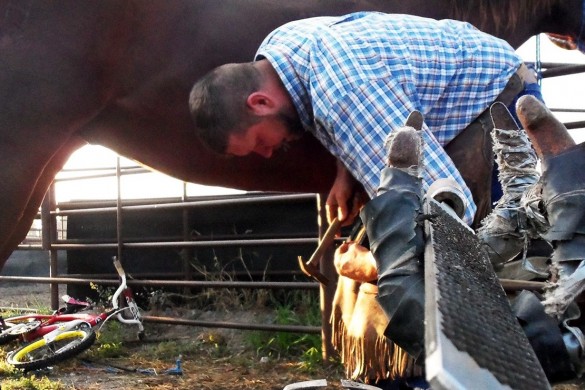
5 Comments
This is so powerful, and spoken beautifully.
It was nice hearing journey.Thank you for sharing experince.
Warmerst regards from Indonesia.
Sydney, Thank you for sharing this important story.. As a parent, I have been concerned about the escalating cost and insurance issues for the future of our CI children … with fears of a future that they will find themselves unable to afford to continue to hear. I have not been successful in finding folks and organizations to join together to make this a priority to be addressed. I encourage all parents and young CI users to get involved and advocate within AG Bell, the Hearing Loss Association, American Cochlear Implant Alliance, and elsewhere to get this issue on our agenda as a priority. There’s a “nuclear arms race” of technology cost explosions in health care that we can’t get our arms around. The implant manufacturers face their own profit priorities to focus on the next generation and next product sale, to the potential detriment of the needs of the existing user base. Insurance company behaviors and attitudes are too much to even begin to comment here. Hope this story helps to stir a movement. Thank you Sydney!
Sydney, well done! Our now 12 year old son suffered a soft failure in his favoured right implant 8 years after initial implantation and we were so grateful for the second implant. Even so the loss in hearing quality going from two to one implants surprised us. After re-implantation and a lot of hard work both implants are working well but he now favours his left (old) implant. Long may it last! All the best for your quest for a second implant.
Sydney,
So proud of you. You’re wonderful!
Blessings & Love, Aunt Judi